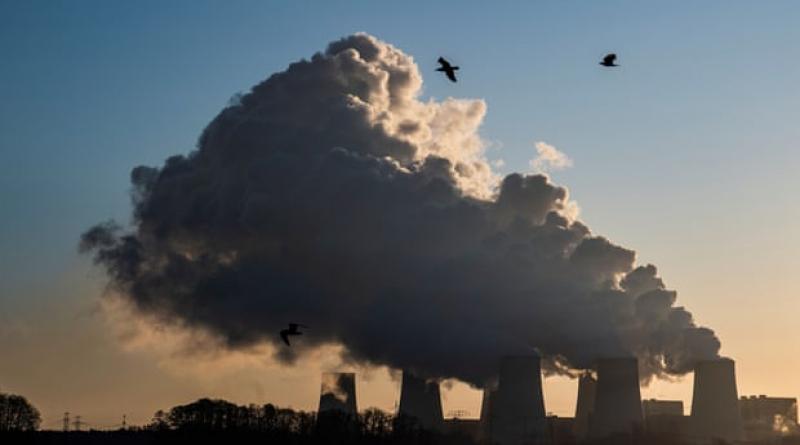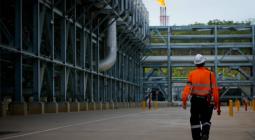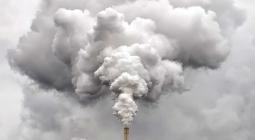Impact of Covid slowdown on CO2 in the atmosphere 'not even a blip', Australian scientist says.

By early June, emissions had mostly returned to the levels of the same period in 2019, a UN report found.
The Covid-19 pandemic will deliver an unprecedented annual drop in global greenhouse gas emissions of up to 7% by the end of 2020, but the slowdown’s impact on the atmosphere will be almost imperceptible, according to a major report led by the United Nations.
Analysis of fossil fuel burning found emissions hit their lowest daily rate in April but by June – as economies began to open up again – emissions were returning to the same levels seen the previous year.
Dr Pep Canadell, from Australia’s CSIRO climate science centre and one of the report’s authors, said by the close of 2020 the pandemic’s impact on slowing emissions would be at least twice that of the 2007 global financial crisis, when economic activity dropped.
“For this year, what this means for the concentrations of CO2 in the atmosphere fundamentally, is nothing,” Canadell told Guardian Australia.
“That’s because we put 42bn tonnes of CO2 into the atmosphere last year so even three per cent less means we are still loading the atmosphere so heavily that this is not even a blip.”
The United in Science report was launched Wednesday in Geneva by the UN secretary general, António Guterres, who said recovery from the pandemic needed to be turned into an opportunity to tackle the climate crisis.
Using analysis of global emissions up to June, the report found 2020 would see a drop of between 4% and 7% based on 2019 levels.
The report, coordinated by the UN’s World Meteorological Organization, said: “Although such a drop appears to be unprecedented, the amount emitted at peak confinement was still equivalent to emissions in 2006, just a decade and a half ago.”
In early April, daily global emissions from fossil fuels were down 17% compared to the average for the previous year.
By early June, the report said emissions had mostly returned to the levels of the same period in 2019, “showing the rapid return of emissions, as many countries loosened their confinement restrictions.”
The amount of CO2 in the atmosphere is growing at about three parts per million each year.
The drop in emissions for 2020 would translate to a drop of 0.23 ppm at most, which the report said was well within the changes seen year to year from natural factors.
In a statement, WMO secretary general Prof Petteri Taalas said: “Greenhouse gas concentrations - which are already at their highest levels in 3 million years - have continued to rise.”
He said the years 2016 to 2020 was likely to be the warmest five-year period on record, adding: “This report shows that whilst many aspects of our lives have been disrupted in 2020, climate change has continued unabated.”
Canadell, the executive director of the Global Carbon Project, told Guardian Australia the emissions fall would be unprecedented, even compared to a 1.5% drop experienced from the global financial crisis.
But he said if the economic crisis sparked by the pandemic was to continue and more countries entered recession the world could see sustained falls of emissions for several years.
He said: “We may have peaked with emissions last year, and then this year we have a decline. We could ride the wave all the way to zero over the next few decades.”
Canadell said the fall in emissions in 2020 and further potential drops could prompt governments to react in two different ways.
Some governments may become complacent, whereas others could see the economic recovery as a chance to further mitigate greenhouse gas emissions.
If governments did not take active steps to build cleaner economies then greenhouse gas emissions could surge as economies emerged from recession. “There’s opportunity and risk as we go forward,” he said.
The report also summarised the world’s changing climate and major impacts over recent years.
Between 2020 and 2024, there was a one-in-four chance of the world experiencing a year when global average temperatures were 1.5C above pre-industrial levels.
The three biggest economic losses on record from wildfires had occurred in the last four years. The underlying heat that drove fires in the Arctic region in early 2020 was at least 600 times more likely because of caused climate change, the report said.
Every year from 2016 to 2020 had seen the Arctic left with below-average levels of sea ice at the end of each summer. Arctic sea ice in July 2020 was the lowest on record for that month.
Loss of ice from ice sheets connected to land in Antarctica and Greenland was continuing to push sea levels higher, the report said.
10 September 2020
The Guardian



